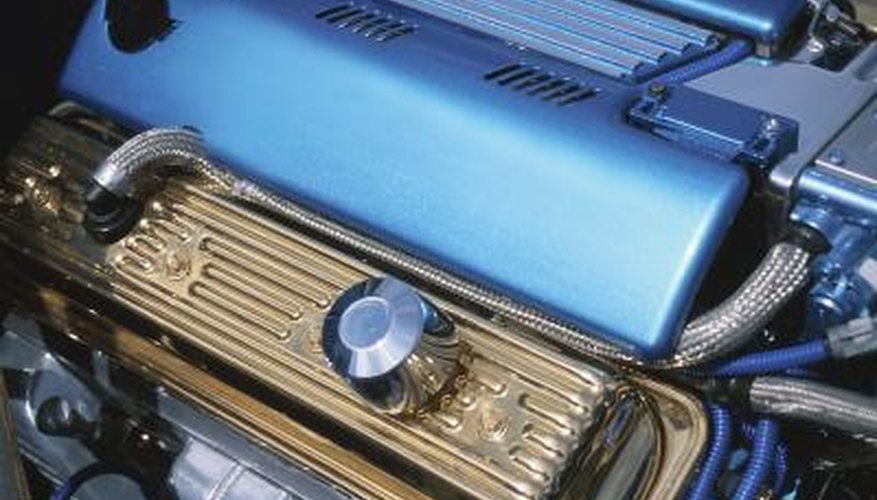The valves in an engine allow air into the piston chamber for compression, and release exhaust gases after ignition. If the piston that lifts the valve becomes damaged or corroded, it can stick in place. If the valve does not open and close in sync with the rest of the engine, the cycle of gases is interrupted. This can cause the engine to misfire or even cut out. Sticky valves and lifters usually get worse if left unchecked, so it is useful to know how to diagnose them as soon as they occur.
- The valves in an engine allow air into the piston chamber for compression, and release exhaust gases after ignition.
- If the valve does not open and close in sync with the rest of the engine, the cycle of gases is interrupted.
Park the car on a flat, level surface. Engage the handbrake and put the car in neutral. Lift the bonnet. Start the engine and allow it to idle for 10 to 15 minutes. The engine needs to reach optimum operating temperature. As the engine warms, the volume level should diminish, making it easier to detect any unusual knocking or tapping sounds.
Listen to the idling engine. The pulsing should be stable and constant. Any unprompted rising and falling of the rpm level could be indicative of a sticky lifter or valve. Listen for any "skipped beats" in the pulsing of the exhaust. An idling engine should sound like a constant stream of individual "pops" that maintains the same tempo.
- Listen to the idling engine.
- Any unprompted rising and falling of the rpm level could be indicative of a sticky lifter or valve.
Locate the valve cover beneath the bonnet. It will most likely be a rectangular box on the top surface of the engine -- there may be more than one. Hold the end of the hose flat against the top of the valve cover. Hold the other end to an ear and move the hose tip along the surface of the valve cover. Listen for changes in the tone of the mechanical sound coming from beneath the cover. A stuck lifter will produce an irregular, muffled "clacking" sound, which is notably louder and sharper than those valves functioning normally.
TIP
An oil change can often remedy a stuck lifter, without having to carry out more drastic repairs. The symptoms of sticky valves can often be worse when starting the engine from cold. If there are issues idling from a cold start, it's a good idea to check the valves as soon as possible.
WARNING
Do not touch the surface of the engine when listening to the valves through the covers; it will be extremely hot.
